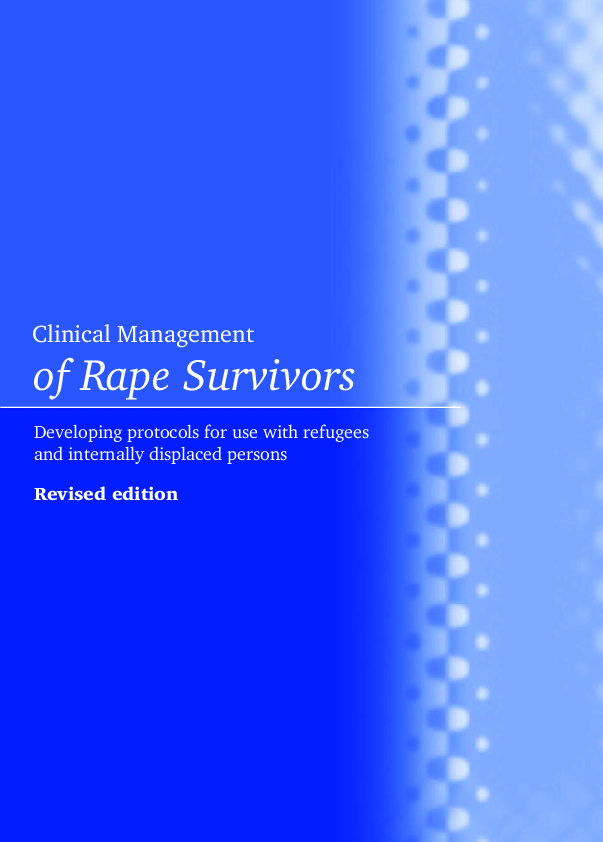
Reports
Clinical Management of Rape Survivors: Developing protocols for use with refugees and internally displaced persons
Publication year:
2004
English, Arabic
Format:
(547.5 KiB)
Publisher:
UNHCR, United Nations High Commissioner for Refugees,WHO, World Health Organization
Over the past five years, humanitarian agencies have been working to put in place systems to respond to sexual and gender-based violence, as well as to support community-based efforts to prevent such violence. In March 2001, the international humanitarian community came together to document what had been done and what still needed to be done to prevent and respond to sexual and gender-based violence towards refugees. In a conference hosted by the office of the United Nations High Commissioner for Refugees, Geneva, 160 representatives of refugee, nongovernmental, governmental and intergovernmental organizations shared their experiences and lessons learned.
The first version of this document was an outcome of that conference. It was distributed in a variety of settings around the world and field-tested at several sites. Feedback from these field-tests has been included in the current revised version, which is the result of collaboration between the International Committee of the Red Cross (Health Unit); the United Nations High Commissioner for Refugees (Technical Support Unit); the United Nations Population Fund (Humanitarian Response Unit); and the World Health Organization (Department of Reproductive Health and Research, Department of Injury and Violence Prevention, and Department of Gender, Women and Health). This version has also been updated to include the most recent technical information on the various aspects of care for people who have been raped.
Read full abstract
View & Download
Autodetected language
English
1 Documents
Other languages
Document information
Content type
Rights
© Author/Publisher
Found a mistake? Help us improve!
If you have noticed a document assigned to the wrong author or any other inaccuracies, let us know! Your feedback helps us keep our data accurate and useful for everyone.
Share
Link
